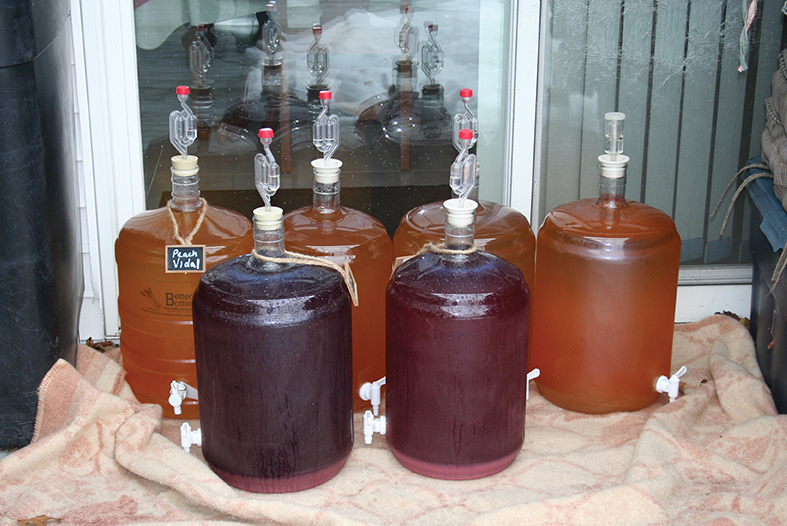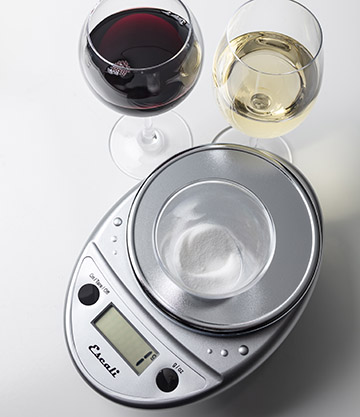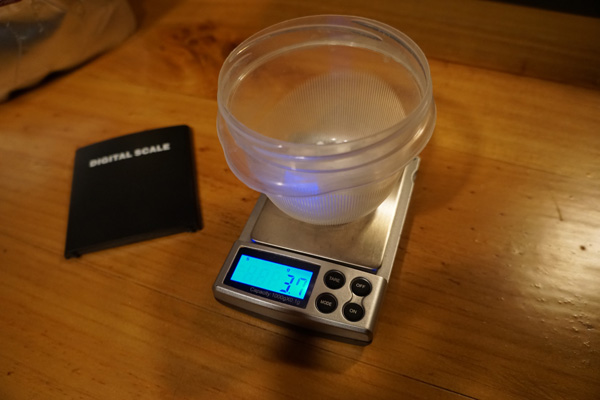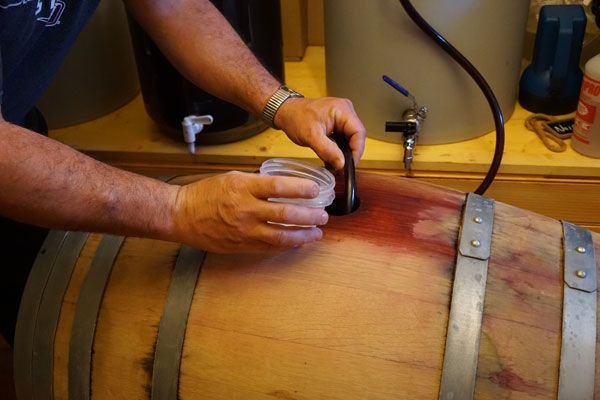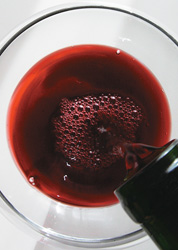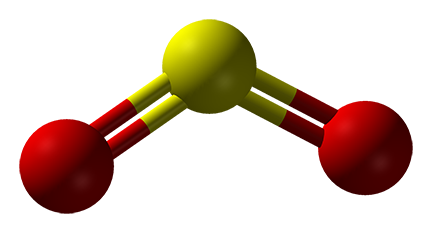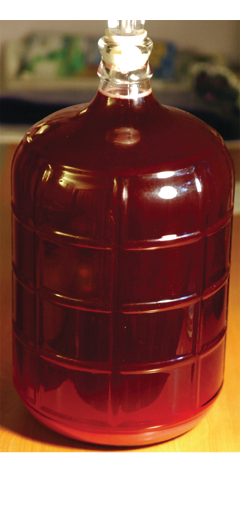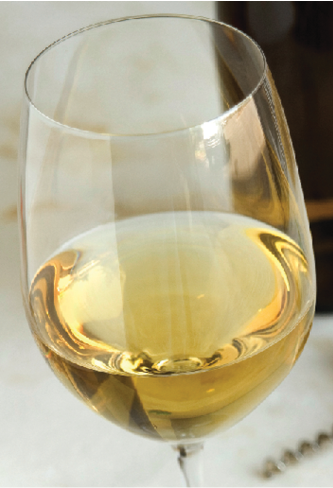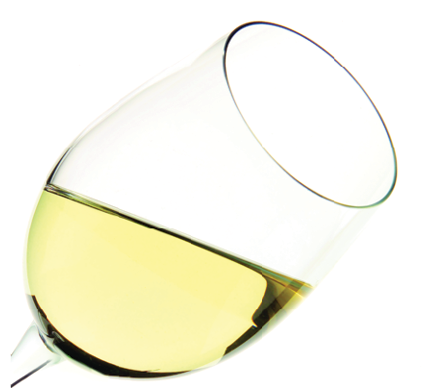Topic: Sulfite
Mid-Winter Check-In
Harvest and the heavy lifting of crushing and fermenting your previous vintage are in the rearview mirror at this point. That doesn’t mean the work is over. Let’s check in on your wines and review the steps every winemaker should be taking during the long winter months.
Over-Sulfiting Your Grape Must
I think you’ll be OK. Even if you’ve made a double sulfur dioxide addition to your Chambourcin grape must it should eventually still take off, albeit perhaps a bit more slowly than
Practical Sulfite Management
The use of sulfites in wine — how much, or even if used at all — remains a contentious subject. WineMaker’s Technical Editor shares his own simple yet practical approach to sulfite management that works every time.
Campden Tablets Best Practices
The great thing about Campden tablets (a convenient form of dosing in sulfur dioxide for home winemakers) is that they will inhibit the yeast and bacteria you do not want (which are
Cures to an Oversulfited Wine
Since you can’t measure your free and total SO₂, let’s do some numbers to see what kind of a potential problem you might be facing. First off, let’s talk about your bottle-rinsing
Recommended First SO2 Addition
Thanks, Bob, for joining fellow columnists and me for our first ever virtual WineMaker Harvest Boot Camp this past September! This question didn’t get answered in my Q&A session held at the
Testing For Free SO2
Good for you for investing in a way to track your free SO2 (FSO2) levels. It’s one of the most important ways we can keep our wines safe. You can buy something
Testing for SO2: Keeping your wine safe
Despite popular lore in some diet-watching crowds, sulfite in wine is not only low compared to many foods, but it is key to limit oxidation of wine and to keep spoilage at bay. Learn how to test a wine’s sulfite level and when and why to use it properly for your wines.
How to Adjust SO2 Levels In Must
For harvest purposes, when adding SO2 to grapes in order to knock down feral yeast and bacteria (with the goal of reducing VA and letting your yeast of choice get a foothold),
SO2 Fundamentals
Sulfites get a bad rap in the world outside of true wine aficionados. Alex Russan takes readers on a journey through the world of sulfites and describes a couple schools of thought regarding its use throughout the winemaking process.
Sulfite Timing Question
That’s a great question with a very simple answer. You should not add postassium metabisulfite (SO2, or sulfur dioxide) to your wine between primary and secondary fermentation. Because the SO2 will inhibit
The Sulfite Blues
Your nose (bruised apple/sweet smell) and your chemical analysis (loss of Free SO2) are telling me that you have an oxygen ingress problem and aldehydes and perhaps an increase in VA (volatile
Preventing Oxidation, Excess Sulfite
I need help to prevent oxidation. I make about 40 gallons (151 L) from California grapes each year, usually finishing quite nice, but last year’s Sangiovese suffers from oxidation. After fermentation and
Ripper Test On Red Wine
The short answer to your question: yes, if you dilute your wine sample before running a Ripper analysis for SO2, you then need to multiply your result by the dilution factor you
Finding Ideal SO2 Levels
You do an excellent job of outlining one of the major conundrums we all experience in the winemaking world. How much SO2 do we need to add to our wines to keep
Free SO2 Levels
It seems that you and Craig are going through many of the same issues (see this question and answer). Like I mentioned to Craig, it’s really impossible to add enough sulfur dioxide
Over-Sulfited My Wine
I’m not sure if in the above question you are referring to having over-added to grape juice or to finished wine. Regardless, adding 45 grams of potassium metabisulfite, which is about 58%
Sulfite Question When Blending Wine
You bring up a very good question. For the compound you’re talking about, sulfur dioxide, you’ll probably come pretty close to what you would predict based on knowing the volume and the
Adding Campden Tablets to Wine
The great thing about Campden tablets (a convenient form of dosing in sulfur dioxide for home winemakers) is that they will inhibit the yeast and bacteria you do not want (which are
The Basics of Sulfite
Learn the basics of what sulfur dioxide is, as well as when and how to use sulfite in your winemaking.
Sulfite Calculator
Introduction The Sulfite Calculator is a simple yet very useful tool to quickly calculate the amount of sulfite needed to adequately protect a wine. It calculates the amount of sulfite based on
Simple Sulfite Wine Chemistry
There is no denying: Sulfur dioxide (SO2) can be a source of headaches for winemakers — even without drinking any wine. Why does SO2 continue to be such a perplexing and confusing
Techniques to Reduce Sulfite Additions
In spite of their long history as wine preservatives dating to the days of the Romans, sulfites can receive a bad rap. Many suspect that sulfites cause headaches or believe that any preservative is harmful, and so, there is a strong push to eliminate — or at least reduce — the use of sulfites and any additives perceived not to be “natural.” Let’s take a look at some of the strategies to reduce sulfite use.
Allergic To Sulfites
Certainly you can try to pasteurize (heat at a certain temperature for a certain amount of time) your wine if you like. Many foods and beverages (like milk) are so heat treated
Making White Wines with Less Sulfite
Managing oxygen is key in making reduced-sulfite or sulfite-free wines. A dissolved oxygen (DO) meter is a wise investment; you can buy a portable model for less than $300. Then you can
